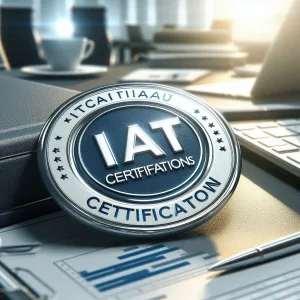Quality assurance (QA) reviews in the context of internal audit are systematic evaluations aimed at ensuring that audit processes and outcomes meet established standards of quality and effectiveness. These reviews are essential for maintaining the integrity of the audit function, as they help identify areas for improvement, ensure compliance with regulatory requirements, and enhance overall audit performance. The QA process typically involves ongoing monitoring and periodic self-assessments, which are critical for fostering a culture of continuous improvement within the audit function [1][3].
In recent years, the landscape of internal auditing has evolved significantly, driven by advancements in technology. Leveraging tools such as artificial intelligence (AI) and data analytics has become increasingly vital for internal auditors seeking to enhance the quality and efficiency of their audits. These technologies enable auditors to analyze vast amounts of data quickly, identify patterns, and uncover insights that would be difficult to detect through traditional methods. By integrating AI and data analytics into the QA process, auditors can not only streamline their workflows but also improve the accuracy and reliability of their findings [2][8].
The growing importance of technology in internal audit cannot be overstated. As organizations face increasingly complex regulatory environments and heightened expectations for transparency and accountability, the role of technology in enhancing audit quality has become paramount. By adopting innovative solutions, internal auditors can ensure that their practices remain relevant and effective, ultimately leading to more informed decision-making and better risk management [7][10]. This section will explore how embracing technology can transform quality assurance reviews in internal audit, setting the stage for a deeper discussion on the future of the audit profession.
The Evolution of Quality Assurance in Internal Audit
Quality assurance (QA) in internal audit has undergone significant transformations over the years, evolving from rudimentary practices to sophisticated, technology-driven methodologies. This evolution reflects the changing landscape of auditing, influenced by regulatory demands, technological advancements, and the increasing complexity of business operations.
Traditional Methods of Quality Assurance in Internal Audit
Historically, quality assurance in internal audit relied heavily on manual processes. Auditors would conduct reviews based on established guidelines and checklists, focusing primarily on compliance and financial accuracy. These traditional methods included:
- Checklists and Manual Reviews: Auditors utilized standardized checklists to ensure compliance with regulations and internal policies. This approach was often time-consuming and prone to human error.
- Periodic Assessments: Quality assurance was typically conducted at set intervals, which meant that any issues identified could be outdated by the time the next review occurred. This reactive approach limited the ability to address problems in real-time.
- Limited Scope: Traditional QA processes often focused narrowly on financial and compliance risks, neglecting broader operational and strategic risks that could impact organizational performance [2][3].
Limitations of Manual QA Processes
The reliance on manual quality assurance processes presented several limitations:
- Human Error: Manual reviews are susceptible to oversight and inaccuracies, which can lead to significant compliance and operational risks.
- Inefficiency: The time-consuming nature of manual processes often resulted in delays in identifying and addressing issues, reducing the overall effectiveness of the audit function.
- Inflexibility: Traditional QA methods struggled to adapt to the rapidly changing business environment, making it difficult for auditors to keep pace with new risks and regulatory requirements [6].
The Shift Towards Technology-Driven Approaches
In response to these limitations, the internal audit profession has increasingly embraced technology-driven approaches to quality assurance. This shift is characterized by:
- Integration of AI and Data Analytics: Auditors are now leveraging artificial intelligence and data analytics to enhance the quality and efficiency of their reviews. These technologies enable auditors to analyze vast amounts of data quickly, identifying patterns and anomalies that may indicate risks [3].
- Continuous Monitoring: Technology allows for real-time monitoring of processes and controls, enabling auditors to detect issues as they arise rather than waiting for periodic reviews. This proactive approach enhances the overall effectiveness of quality assurance efforts [9].
- Enhanced Collaboration: Technology facilitates better communication and collaboration among audit teams, allowing for more comprehensive assessments that integrate both internal and external perspectives.
As the internal audit landscape continues to evolve, the integration of technology into quality assurance practices will play a crucial role in enhancing the effectiveness and efficiency of audit functions. By harnessing the power of AI and data analytics, auditors can not only improve their QA processes but also position themselves as strategic partners in organizational governance and risk management.
Current State of Quality Assurance Reviews
In the realm of internal audit, quality assurance (QA) reviews play a pivotal role in ensuring that audit functions operate effectively and adhere to established standards. As organizations increasingly embrace technology, the integration of AI and data analytics into QA processes is becoming essential. Here, we analyze the current QA practices, identify common challenges faced by auditors, and discuss the impact of regulatory requirements on these processes.
Current QA Practices in Internal Audit
Quality assurance reviews in internal audit are designed to evaluate the effectiveness and efficiency of audit activities. These reviews typically encompass:
- Evaluation of Audit Activities: Audit committees and chief audit executives conduct Quality Assurance Reviews (QAR) to assess the internal audit function’s activities, including its charter, plans, policies, and procedures [5][6].
- Continuous Improvement: QA processes are integral to fostering a culture of continuous improvement within organizations. They help ensure that risk management processes and controls are robust, thereby enhancing stakeholder confidence [2].
- Compliance with Standards: The Institute of Internal Auditors (IIA) has established international standards that outline the requirements for quality assurance in internal audit functions. These standards emphasize the need for a Quality Assurance and Improvement Program (QAIP) that covers all aspects of the internal audit function [13][12].
Common Challenges Faced by Auditors
Despite the structured approach to QA reviews, auditors encounter several challenges that can hinder the effectiveness of these processes:
- Resistance to Audits: Employees may perceive audits as intrusive, leading to resistance and a lack of cooperation during the QA review process. This can create an adversarial atmosphere that undermines the objectives of the audit [7].
- Scope Adjustments: Auditors often face difficulties in adjusting the approved scope of audits once fieldwork has commenced. This inflexibility can limit the ability to address emerging risks or changes in the organizational environment [9].
- Resource Allocation: There is often inefficient use of resources allocated to internal audit functions, which can result in potential risks and issues remaining undetected [3].
Impact of Regulatory Requirements on QA Processes
Regulatory requirements significantly influence the design and execution of QA reviews in internal audit:
- Increased Scrutiny: Heightened regulatory scrutiny necessitates that internal audit functions demonstrate not only compliance with established standards but also effective performance. This has led to a greater emphasis on quality assessments that go beyond mere conformance.
- Guidance and Agility: Recent updates to standards provide internal auditors with clearer guidance and increased agility in executing their roles. This adaptability is crucial in a rapidly changing regulatory landscape [8].
- Benchmarking Against Best Practices: Regulatory provisions often require internal audit functions to benchmark their practices against similar organizations and industry best practices. This comparative analysis helps identify gaps and areas for improvement [15].
While current quality assurance practices in internal audit are structured and guided by established standards, there are significant challenges that auditors must navigate. The impact of regulatory requirements further complicates the landscape, necessitating a proactive approach to leverage technology, such as AI and data analytics, to enhance QA processes and drive continuous improvement.
Harnessing AI for Quality Assurance
In the evolving landscape of internal auditing, the integration of Artificial Intelligence (AI) and data analytics is transforming the quality assurance (QA) process. By leveraging these technologies, auditors can enhance efficiency, accuracy, and overall effectiveness in their QA reviews. Here are some key points on how AI can significantly improve quality assurance in internal audits:
- Automation of QA Tasks: AI plays a crucial role in automating repetitive and time-consuming QA tasks. This allows auditors to focus on more complex and specialized activities that require human expertise. By streamlining processes such as data collection, documentation review, and compliance checks, AI can help internal audit teams operate more efficiently and effectively [1][2].
- AI-Driven Analytics for Anomaly Detection: One of the most powerful applications of AI in quality assurance is its ability to analyze vast amounts of data to identify anomalies and potential risks. Advanced data analytics can uncover patterns and trends that may not be immediately visible to human auditors. This capability enhances risk assessment processes, enabling auditors to proactively address issues before they escalate [4][5]. For instance, AI algorithms can flag unusual transactions or deviations from expected patterns, prompting further investigation and ensuring a higher level of scrutiny in the audit process.
- Integration of AI Tools in QA Reviews: Several AI tools can be seamlessly integrated into the quality assurance framework of internal audits. These tools range from data visualization software to machine learning platforms that assist in predictive analytics. For example, tools like ACL Analytics and IDEA can automate data analysis, while platforms like Tableau can provide visual insights into audit findings. Additionally, AI-driven software can facilitate peer reviews by providing a structured approach to evaluating audit work against predefined criteria, ensuring consistency and thoroughness in the QA process [8][12].
By harnessing the power of AI and data analytics, internal audit functions can not only improve the quality of their reviews but also foster a culture of continuous improvement and innovation. As technology continues to advance, the future of quality assurance in internal audit looks promising, with AI at the forefront of driving efficiency and effectiveness in audit practices.
Utilizing Data Analytics for Enhanced QA Insights
In the evolving landscape of internal audit, the integration of data analytics is becoming increasingly vital for enhancing quality assurance (QA) outcomes. This section explores the significance of data analytics in internal audit QA, the role of data visualization in identifying trends, and real-world case studies that demonstrate the effectiveness of these technologies.
Defining Data Analytics in Internal Audit QA
Data analytics refers to the systematic computational analysis of data sets to uncover patterns, correlations, and insights that can inform decision-making. In the context of internal audit QA, data analytics is crucial as it allows auditors to:
- Enhance Risk Assessment: By analyzing historical data, auditors can identify high-risk areas that require more focused attention, thereby improving the overall effectiveness of the audit process [2].
- Detect Anomalies: Advanced analytics can help in recognizing unusual patterns or discrepancies in financial data, which may indicate potential fraud or compliance issues [7].
- Support Continuous Monitoring: Data analytics enables ongoing assessment of internal controls and compliance, allowing for timely interventions and adjustments [3].
The Role of Data Visualization in Identifying Trends and Patterns
Data visualization is a powerful tool that complements data analytics by transforming complex data sets into intuitive graphical representations. This approach aids auditors in several ways:
- Simplifying Complex Data: Visual tools can distill large volumes of data into easily digestible formats, making it simpler for auditors to spot trends and anomalies [4].
- Facilitating Communication: Visual representations of data can enhance communication with stakeholders, providing clear insights that support audit findings and recommendations.
- Driving Strategic Decisions: By visualizing data trends, auditors can make informed decisions that align with organizational goals and risk management strategies.
The integration of data analytics and visualization in internal audit QA is not just a trend but a necessity for modern audit practices. By harnessing these technologies, auditors can significantly improve their effectiveness, drive strategic insights, and ensure robust quality assurance outcomes. As the field continues to evolve, embracing these tools will be essential for audit leaders aiming to stay ahead in a data-driven world.
Integrating Technology into QA Frameworks
In the evolving landscape of internal audit, the integration of technology, particularly AI and data analytics, is becoming increasingly vital for enhancing quality assurance (QA) processes. This section outlines actionable steps for auditors to effectively incorporate these technologies into their existing QA frameworks, emphasizes the importance of training and upskilling audit teams, and highlights best practices for technology adoption.
Steps to Integrate AI and Data Analytics into Existing QA Frameworks
- Assessment of Current QA Processes: Begin by evaluating your existing QA processes to identify gaps and areas where technology can add value. This assessment should focus on strengths, weaknesses, and opportunities for improvement within the current framework [3].
- Define Objectives and Metrics: Clearly outline the objectives for integrating AI and data analytics. Establish key performance indicators (KPIs) to measure the success of these technologies in enhancing QA outcomes [9].
- Select Appropriate Tools: Research and select AI and data analytics tools that align with your QA objectives. Consider factors such as ease of integration, scalability, and the specific needs of your audit processes [8].
- Pilot Testing: Implement a pilot program to test the selected technologies in a controlled environment. This allows for the identification of potential challenges and the refinement of processes before a full-scale rollout [7].
- Full Implementation: After successful pilot testing, proceed with the full implementation of the technology across the QA framework. Ensure that all relevant stakeholders are involved in the transition to facilitate a smooth integration [6].
Importance of Training and Upskilling Audit Teams
- Continuous Learning: As technology evolves, so must the skills of audit teams. Regular training sessions on new tools and technologies are essential to ensure that auditors are equipped to leverage AI and data analytics effectively [5].
- Fostering a Tech-Savvy Culture: Encourage a culture of continuous improvement and innovation within the audit team. This can be achieved through workshops, seminars, and collaborative projects that focus on technology in auditing [4].
- Cross-Functional Training: Promote cross-functional training where auditors can learn from IT and data analytics professionals. This collaboration can enhance understanding and facilitate better integration of technology into QA processes [2].
Best Practices for Technology Adoption in QA Processes
- Start Small and Scale: Begin with small-scale implementations of technology in QA processes. This approach allows for manageable changes and the opportunity to learn and adapt before scaling up [8].
- Engage Stakeholders: Involve key stakeholders throughout the integration process. Their insights and feedback can provide valuable perspectives that enhance the effectiveness of technology adoption [9].
- Monitor and Evaluate: Continuously monitor the performance of integrated technologies against established KPIs. Regular evaluations will help identify areas for further improvement and ensure that the technology is meeting its intended objectives [3].
- Stay Updated: Keep abreast of emerging technologies and trends in the field of internal audit. This proactive approach will enable audit teams to remain competitive and innovative in their QA practices [1].
By following these steps and best practices, internal auditors can effectively harness the power of AI and data analytics to enhance their quality assurance frameworks, ultimately leading to more efficient and effective audit processes.
Future Trends in Quality Assurance for Internal Audit
As the landscape of internal auditing continues to evolve, the integration of emerging technologies such as Artificial Intelligence (AI) and data analytics is poised to significantly enhance quality assurance (QA) practices. This section explores the potential impact of these technologies on internal audit QA, the evolving role of auditors, and the ethical considerations that accompany these advancements.
Emerging Technologies and Their Impact on Internal Audit QA
The advent of AI, machine learning (ML), and data analytics is revolutionizing the way internal audits are conducted. These technologies enable auditors to analyze vast amounts of data more efficiently, identifying trends, anomalies, and risks that may have previously gone unnoticed. For instance, AI can automate routine tasks, allowing auditors to focus on more complex analyses and strategic decision-making. This shift not only enhances the accuracy and effectiveness of audits but also increases the overall value delivered to organizations [4][14].
Moreover, the implementation of predictive analytics can transform QA processes by forecasting potential risks and issues before they arise. By leveraging historical data, auditors can develop models that estimate the likelihood of future risks, enabling proactive measures to be taken [13]. This capability is expected to lead to a more dynamic and responsive QA framework within internal audit functions.
Evolving Role of Auditors
As technology continues to advance, the role of auditors is likely to evolve from traditional compliance-focused tasks to more strategic advisory roles. The updated Global Internal Audit Standards by the Institute of Internal Auditors (IIA) emphasize the need for internal audit functions to provide strategic value to the business [8]. This shift will require auditors to develop a deeper understanding of technology and its implications for risk management and control effectiveness.
Auditors will increasingly need to collaborate with IT and data analytics teams to ensure that the technology used in audits is soundly designed and functioning as intended. This collaboration will not only enhance the quality of audits but also position auditors as key players in driving organizational innovation and improvement [2][9].
Ethical Implications of Using AI in Quality Assurance
While the integration of AI and data analytics in QA practices offers numerous benefits, it also raises important ethical considerations. The reliance on technology necessitates a robust framework to ensure that AI systems are designed and implemented responsibly. Issues such as data privacy, algorithmic bias, and transparency must be addressed to maintain public trust in the auditing profession [1][6].
As auditors adopt AI tools, they must remain vigilant about the ethical implications of their use. This includes ensuring that AI-driven decisions are fair, unbiased, and based on accurate data. Additionally, auditors will need to develop new skills to interpret AI outputs critically and to understand the limitations of these technologies [10][12].
The future of quality assurance in internal audit is set to be shaped by the rapid advancement of technology. By embracing AI and data analytics, auditors can enhance their QA practices, evolve their roles within organizations, and navigate the ethical challenges that accompany these innovations. As the profession adapts to these changes, the focus will remain on maintaining high standards of integrity and efficacy in auditing practices.
Conclusion
As the landscape of internal auditing continues to evolve, the integration of technology, particularly AI and data analytics, into quality assurance reviews is becoming increasingly vital. Here are the key takeaways that underscore the importance of this transformation:
- Enhanced Insights and Efficiency: Leveraging AI and data analytics allows internal auditors to gain real-time insights, enabling them to detect issues early and provide timely, strategic advice. This capability not only enhances the efficiency of the audit process but also improves the overall quality of the internal audit function, aligning it with the International Professional Practices Framework (IPPF) standards [1][2].
- Ongoing Optimization: Quality assurance is not a one-time effort but a continuous cycle of improvement. By adopting advanced technology tools, auditors can establish measurable quality metrics and track trends over time, leading to ongoing optimizations that enhance product quality and resolve quality issues more effectively [7][8].
- Mindset Shift: Embracing technology requires a significant mindset shift within the audit profession. Auditors must recognize the potential of digital transformation and be willing to adapt to new methodologies that incorporate AI and data analytics into their workflows. This shift is essential for staying relevant and effective in a rapidly changing environment [12].
- Leadership in Change: Tech-savvy auditors are uniquely positioned to lead this change within their organizations. By championing the adoption of innovative technologies, they can drive improvements in quality assurance practices and set a precedent for their peers. This leadership is crucial for fostering a culture of continuous improvement and ensuring that internal audit functions remain robust and effective [3][11].
In conclusion, the future of quality assurance in internal audit is bright, driven by the power of technology. By embracing AI and data analytics, auditors can not only enhance their quality assurance reviews but also position themselves as leaders in the transformation of the audit profession. It is time for tech-savvy auditors to take the initiative and lead the charge towards a more efficient, effective, and technologically advanced internal audit landscape.
Find out more about Shaun Stoltz https://www.shaunstoltz.com/about/
This post was written by an AI and reviewed/edited by a human.



